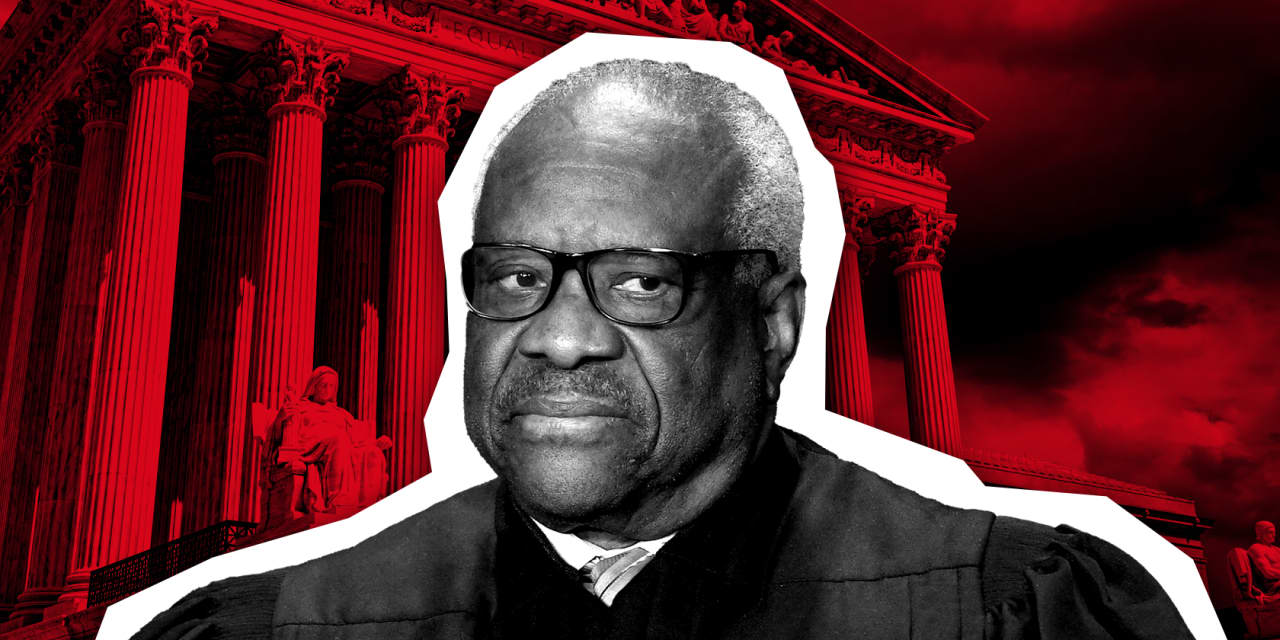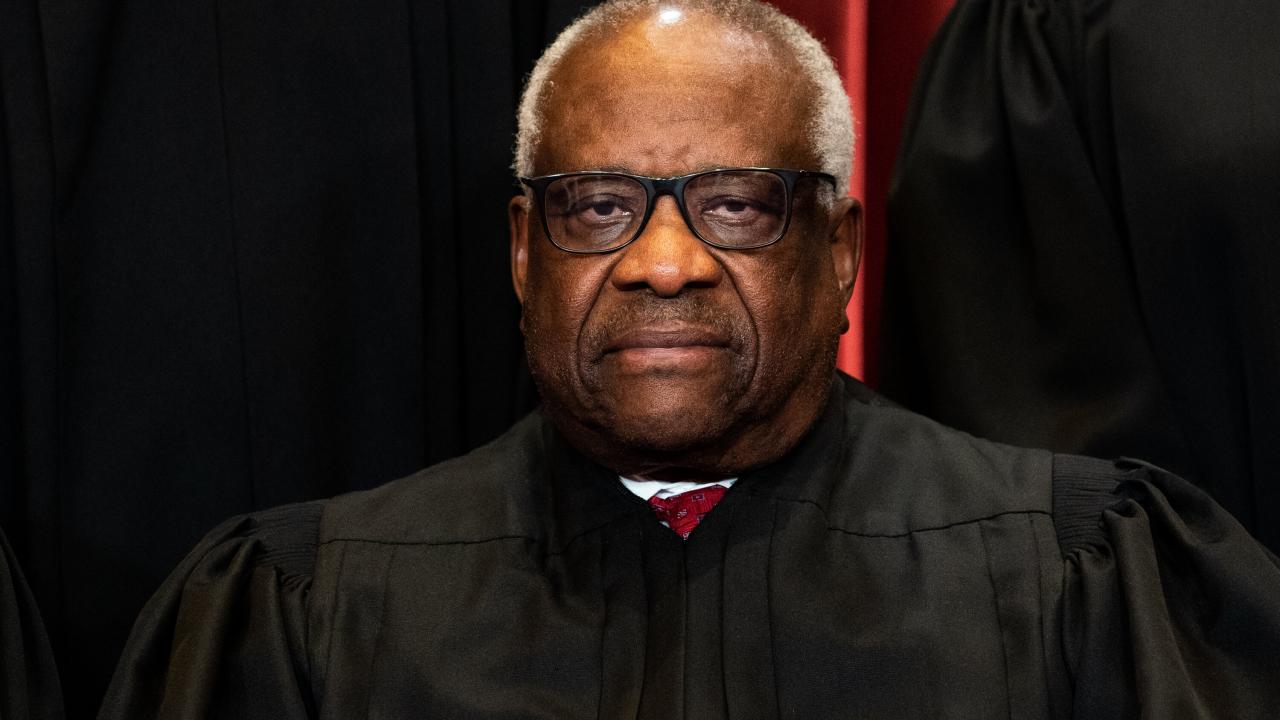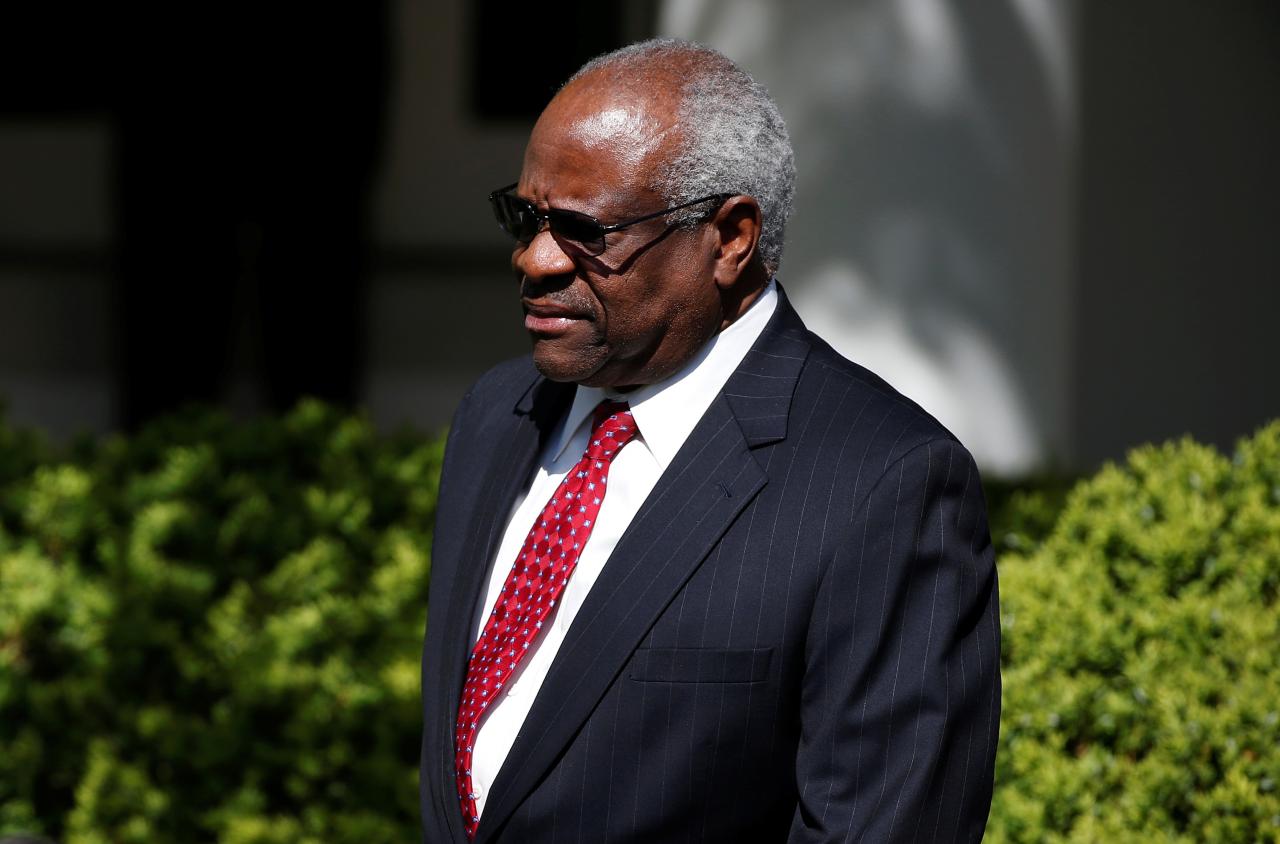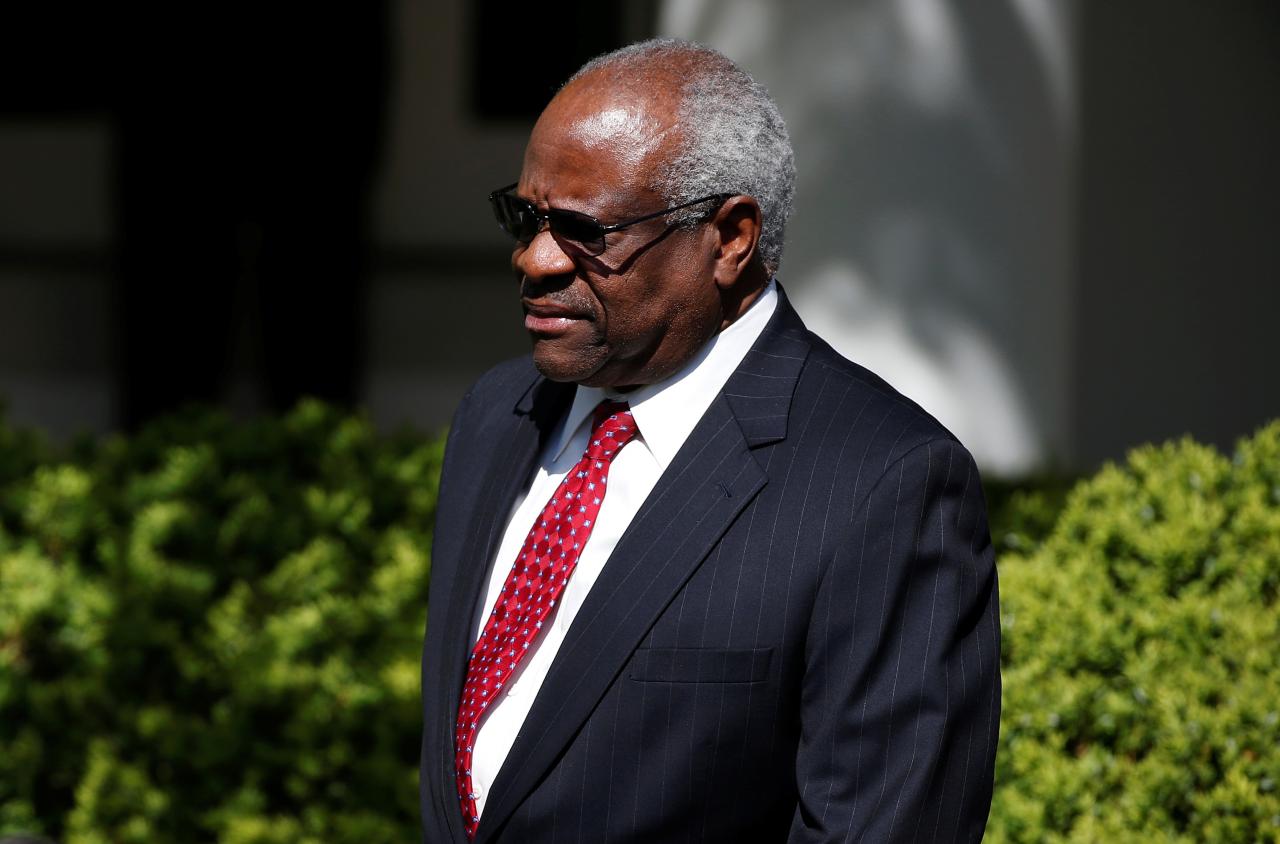Federal courts won’t refer Clarence Thomas for DOJ investigation – Federal Courts Reject Thomas DOJ Referral: The recent decision by federal courts not to refer Supreme Court Justice Clarence Thomas for a Department of Justice investigation has sparked intense debate. This refusal, based on the separation of powers doctrine, raises crucial questions about judicial ethics, accountability, and public trust. We’ll explore the legal arguments, public reaction, and potential ramifications of this significant development.
The courts’ reasoning centers on the delicate balance between judicial independence and the need for transparency. This decision is being compared to past instances of alleged judicial misconduct, prompting discussions about whether existing ethical guidelines are sufficient. The public outcry, reflected in diverse news coverage, highlights the deep concerns about the integrity of the Supreme Court and the potential erosion of public confidence.
The Federal Courts’ Decision Regarding Justice Clarence Thomas
The decision by federal courts not to refer Justice Clarence Thomas for a Department of Justice investigation regarding potential ethics violations has sparked significant debate. This article examines the legal framework surrounding such decisions, analyzes the courts’ reasoning, explores public reaction and ethical concerns, and assesses the potential responses from the Department of Justice and the Supreme Court itself.
The Judicial Branch’s Role in Investigations

The separation of powers doctrine, a cornerstone of the U.S. government, dictates distinct roles for the legislative, executive, and judicial branches. This principle significantly influences how investigations involving Supreme Court justices are handled. While the judiciary is generally independent, it’s not entirely immune from external scrutiny. Historically, interactions between the judiciary and investigations have varied, often depending on the nature of the allegations and the specific circumstances.
For instance, investigations into judicial misconduct have historically been handled internally within the judicial branch itself, with varying degrees of transparency. There are established ethical guidelines and codes of conduct for Supreme Court justices, including rules regarding financial disclosures, gifts, and outside activities, designed to maintain the integrity of the Court.
Analysis of the Federal Courts’ Decision, Federal courts won’t refer Clarence Thomas for DOJ investigation

The federal courts’ decision to not refer Justice Thomas for investigation likely stemmed from a careful consideration of the separation of powers doctrine and the limited authority of the courts in initiating investigations against a fellow branch of government. The reasoning likely involved a legal analysis of whether sufficient evidence existed to warrant a referral, and whether such a referral would be an appropriate exercise of judicial power.
Comparing this decision to past cases involving potential conflicts of interest within the judiciary reveals a complex picture. Some cases have resulted in referrals for investigation, while others, like the present one, have not, highlighting the case-specific nature of these decisions. Established legal precedents regarding judicial independence and the presumption of innocence undoubtedly influenced the court’s decision-making process.
Public Perception and Ethical Concerns
Public reaction to the decision has been sharply divided. Some view the decision as upholding judicial independence, while others express concerns about the lack of accountability for potential ethical breaches. The ethical implications extend beyond Justice Thomas’s personal conduct, impacting the integrity of the Supreme Court itself. Public trust in the institution is crucial for its legitimacy and effectiveness.
| News Outlet | Headline | Summary |
|---|---|---|
| The New York Times | Federal Courts Decline to Refer Justice Thomas for Investigation | The article details the courts’ decision and the arguments for and against referring Justice Thomas. |
| The Washington Post | Thomas Ethics Case: Courts Refuse Referral | The Post analyzes the political implications of the decision and public reaction. |
| CNN | Supreme Court Justice Thomas Faces Ethics Scrutiny | CNN reports on the ongoing ethical concerns surrounding Justice Thomas. |
The Department of Justice’s Response and Options
Despite the courts’ decision, the Department of Justice retains the authority to initiate its own investigation. This could involve a review of publicly available information, or it might require the DOJ to seek additional evidence. Past responses to similar situations involving potential misconduct by high-ranking officials have varied, depending on the severity of the allegations and the availability of evidence.
The DOJ’s options range from inaction to a full-scale investigation.
- Argument for DOJ Investigation: Maintaining public trust in the Supreme Court requires thorough investigation of credible allegations, regardless of the courts’ decision.
- Argument against DOJ Investigation: Opening an investigation could be seen as an overreach of executive power, potentially undermining the independence of the judiciary.
Impact on Public Trust and the Supreme Court’s Legitimacy
The situation significantly impacts public trust in the Supreme Court and the judicial system as a whole. Erosion of public confidence can undermine the court’s authority and perceived impartiality. Long-term consequences could include decreased public acceptance of Supreme Court decisions and increased polarization around judicial issues.
Imagine a cracked foundation representing the court’s legitimacy. The cracks, initially small and localized around the area representing Justice Thomas, gradually spread, threatening the stability of the entire structure. This visual metaphor represents the potential for a broader crisis of confidence in the Supreme Court.
So, the federal courts decided against referring Clarence Thomas for a DOJ investigation. It’s a big deal, raising questions about accountability. This contrasts sharply with the recent news that Apple to pay $95M to settle lawsuit accusing Siri of eavesdropping , showing how corporations can face consequences for privacy violations. The Thomas case highlights the complexities of holding powerful individuals accountable, a stark difference from the clear-cut corporate liability in the Apple situation.
To enhance its public image and restore confidence, the Supreme Court could implement stricter ethical guidelines, increase transparency in its operations, and engage in more robust public communication about its decision-making processes. These measures could help to address public concerns and reinforce the Court’s commitment to integrity and impartiality.
Last Word

The decision not to refer Justice Thomas for a DOJ investigation leaves a lingering question mark regarding accountability within the highest court. While the courts cited the separation of powers, the public’s perception of the Supreme Court’s impartiality is undeniably impacted. The DOJ’s potential responses, along with potential Supreme Court reforms, will shape the narrative and ultimately determine the long-term consequences of this unprecedented situation.
The debate is far from over, and the future will tell if this decision sets a precedent for future cases involving potential conflicts of interest among Supreme Court justices.
So, the federal courts aren’t sending Clarence Thomas to the DOJ for investigation – a pretty big deal, right? It’s a completely different kind of pain than what Jasprit Bumrah’s dealing with, as you can see from this news report: Bumrah leaves SCG for scans after experiencing back spasms. One’s a political headache, the other’s a literal one, but both situations highlight the importance of addressing serious issues promptly.
General Inquiries: Federal Courts Won’t Refer Clarence Thomas For DOJ Investigation
What is the separation of powers doctrine and how does it relate to this case?
The separation of powers divides governmental power among the legislative, executive, and judicial branches. The courts argued that referring Justice Thomas would inappropriately infringe on the judicial branch’s independence.
What ethical guidelines apply to Supreme Court justices?
While there’s no formal code of conduct, justices are expected to uphold high ethical standards, avoiding conflicts of interest and maintaining public trust. The lack of a formal code is part of the ongoing debate.
What options does the DOJ still have?
The DOJ could still independently open an investigation, though this would be a politically charged move with significant implications. They could also choose to monitor the situation and await further developments.
So, the Federal courts decided against referring Clarence Thomas for a DOJ investigation – a pretty big deal, right? It’s a completely different kettle of fish from wondering what happened to Wayne Mardle, as you can see if you check out this article: What happened to Wayne Mardle as commentator missing from. Anyway, back to Thomas, the whole situation highlights some serious questions about accountability and transparency in high places.
Could this decision impact future Supreme Court cases?
Yes, this decision could set a precedent affecting how future allegations of misconduct against Supreme Court justices are handled, potentially influencing public perception and the Court’s legitimacy.
